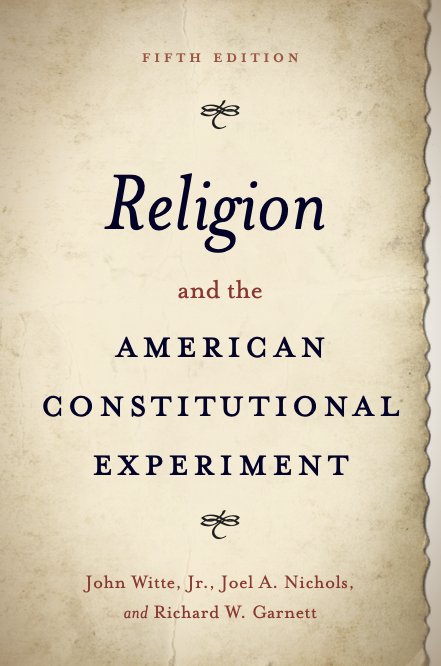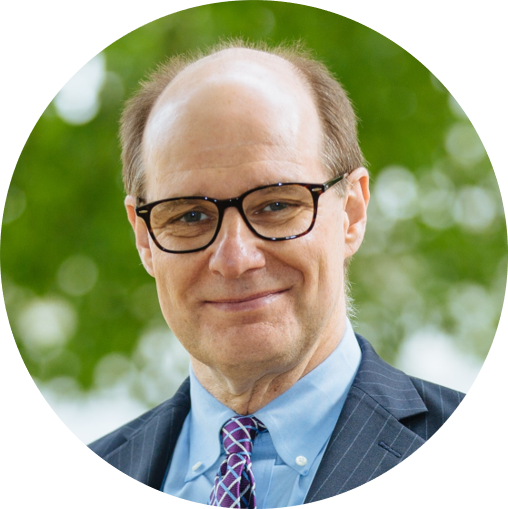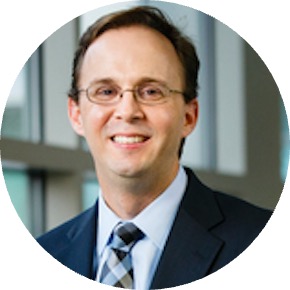
Religion and the American Constitutional Experiment
by John Witte, Jr., Joel A. Nichols, and Richard W. Garnett
Thomas Jefferson once described America’s new religious freedom guarantees as a “fair” and “novel experiment.” These guarantees, set out in the new state and federal constitutions of 1776 to 1791, defied the millennium-old assumptions inherited from Western Europe that one form of Christianity must be established in a community and that the state must protect and support it against all other forms of faith. America would no longer suffer such governmental prescriptions and proscriptions of religion, Jefferson declared. All forms of Christianity had to stand on their own feet and on an equal footing with all other religions. Their survival and growth had to turn on the cogency of their word, not the coercion of the sword, and on the faith of their members, not the force of the law.
This new American constitutional experiment in granting religious freedom to all and religious establishment to none was a product of both the theology and politics of the founding era from 1760 to 1820. Four major groups proved to be the most influential in shaping the new constitutional provisions – Puritans, Evangelicals, Enlightenment Liberals, and Civic Republicans. Each group offered its own distinct teachings on religious freedom, and each had its own preferences and proposals for how to implement the law of religious freedom. This diverse quartet of founders, however, often found common cause and used common language to define and defend religious freedom, particularly during the decisive constitutional convention and ratification debates from 1776 to 1791. Together, these four groups held up the four corners of a wide canopy of opinions about religious liberty in the founding era. The “founders’ intent” – or, more accurately, the original understanding of the First Amendment and of the first state constitutional religious freedom guarantees – cannot be reduced to any one of these groups’ views. It must be sought in the tensions among them and in the general principles that emerged from their interaction.
Six principles of religious freedom were ultimately gathered under this founding canopy: (1) liberty of conscience; (2) free exercise of religion; (3) religious pluralism; (4) religious equality; (5) separation of church and state; and (6) no establishment of a national religion. These six principles – some with ancient roots in the Western legal tradition, others newly crafted by the founders – appeared regularly in the debates over religious liberty and religion-state relations in the eighteenth century, although with varying definitions and priorities. They were also commonly incorporated into the original state constitutions, and they helped to shape the First Amendment of the Constitution of the United States. They remain at the heart of the American experiment today – as central commandments of the American constitutional order and as cardinal axioms of a distinct American logic of religious liberty.
This bold new constitutional experiment in religious freedom remains in place, and in progress, in the United States. The experiment falls into three main eras, with a fourth era emerging today. In the first era, from 1776 to 1940, principal governance of the experiment lay with the states, each operating under its own state constitutional provisions on religion. The First Amendment applied by its text only to the federal government— “Congress shall make no law respecting an establishment of religion, or prohibiting the free exercise thereof.” And these First Amendment guarantees of no establishment and free exercise of religion were rarely addressed and only superficially enforced in the federal courts. Not one Supreme Court case before 1940 found a violation of either the no-establishment or free exercise clauses. Most questions of religious freedom in this first era were left to state legislatures and courts to resolve, with widely varying local results.

In the second era, from 1940 to 1990, principal control of the experiment shifted to the federal courts, led by the Supreme Court. In Cantwell v. Connecticut (1940) and Everson v. Board of Education (1947), the Court applied the First Amendment religion clauses for the first time to state and local governments. Dismayed by the growing evidence of local bigotry against religion, both at home and abroad, the Cantwell and Everson Courts created a uniform and judicially-enforced American law of religious liberty. The Court read the First Amendment guarantees of religious liberty into the general liberty guarantee of the Fourteenth Amendment, which reads: “No state shall deprive any person of . . . liberty . . . without due process of law.” The “religious liberty” guarantees of the First Amendment, the Court said, were part of the body or “corpus” of liberties protected by the Fourteenth Amendment and thus could be applied against states as well.
The Court had already used this interpretive move — called the “incorporation doctrine” — to apply the First Amendment free speech, free press, and free assembly clauses against state and local governments. In the 1940s, Cantwell and Everson applied this same incorporation doctrine to the First Amendment religious liberty guarantees. For the first time in American history, it made possible a national law of religious liberty enforceable by the federal courts against every branch and level of government. The First Amendment no-establishment and free exercise clauses bound the federal government directly. They bound state and local governments indirectly through their “incorporation” into the Fourteenth Amendment due process clause. Regardless of whether they were directly or indirectly applied, however, these religious freedom guarantees provided religious individuals and groups with the same constitutional protection. After Cantwell and Everson, thousands of religious freedom cases poured into the lower federal courts.
Some 175 religious freedom cases – and counting – have reached the Supreme Court since 1940 (compared to only 48 cases in the prior 150 years). Fully 80% of these post-1940 cases dealt with state and local government issues and actions, and more than half of the cases have found religious freedom violations. While this universalization of First Amendment religious liberty after 1940 did – and still sometimes does – anger federalist states’ rights activists, it was the growing local bigotry at home and abroad that compelled the Court to act decisively. Local bigotry was also the reason that America and the world embraced religious freedom in the 1940s as a universal and non-derogable human right of all persons – one of the famous “four freedoms” that President Roosevelt championed to rebuke the horrific abuses inflicted on Jews and other religious and cultural minorities during World War II and the Holocaust. Religious freedom for all was considered too important and universal a right to be left to the political whims of state governments or to local religious and cultural prejudices and preferences.
For the next half century, the Supreme Court enforced both the no-establishment and free exercise guarantees of the First Amendment with rigor. The Court’s no-establishment cases generally mandated a “strict” separation between religion and public education, and between state funds and religious schools. Its free exercise cases offered strong protections for religious expression, religious exemptions, and religious autonomy. The Court effectively positioned the “freedom from religion” and “freedom for religion” norms of the First Amendment as reverse magnetic poles juxtaposed to create as much space and liberty as possible for people of all faiths and of no faith.
A more candid acknowledgment of these religious sources and dimensions of the First Amendment enriches more than endangers our understanding.
The third era of the American experiment in religious freedom began in the mid-1980s and accelerated into the 2010s. In this third era, the Supreme Court stepped back for a time from leadership, reflecting its new devotion to federalism and separation of powers. The Court took fewer establishment clause cases and those that it decided tended to be more deferential to policy choices and more welcoming of cooperation between religious institutions and governments. The Court also weakened considerably its free exercise review, allowing neutral laws of general applicability to stand regardless of the burden they imposed on religious activity. This similarly had the effect of elevating political and policy choices to govern free exercise matters.
In response, the leadership of the American experiment shifted away from the federal government to the states, and away from the courts to the legislatures. State legislatures and courts became bolder in conducting their own experiments in religious liberty, some of which seem calculated to contest the Supreme Court’s decisions and doctrines. Congress enacted several important new statutes, notably the 1993 Religious Freedom Restoration Act (RFRA) and the 2000 Religious Land Use and Institutionalized Person Act (RLUIPA), to provide stronger statutory protections for religious individuals and groups. A score of state legislatures passed comparable state RFRAs. It was no small irony that by 2000, federal and state statutes provided a good deal more religious freedom protection than the First Amendment itself.
But what the legislatures can give with one hand, they can take back with the other. In the 2000s and 2010s, several state and local governments began to turn away from religious freedom, and the creation of state RFRAs stopped abruptly. There were many reasons for this change of legislative heart – worries about militant Islamism after 9/11, the exposures of massive sexual scandals and coverups within some churches, new media exposés on the luxurious lifestyles of some religious leaders and tax exempt religious institutions, and most recently the insistence of some religious groups on gathering for worship despite COVID-related restrictions. An even stronger reason for the turn against religion was that some more traditional churches and faith communities dissented from the crafting of new constitutional rights of same-sex equality and marriage and also opposed older constitutional rights to contraception and abortion. Critics now branded religion as an enemy of liberty, and decried religious freedom as an outdated constitutional luxury. “Why tolerate religion?” an influential text of 2013 was titled, given that it is intolerant, irrational, unscientific, and nonsensical.
In states with strong state RFRAs in place, religious freedom remained well protected. But in states without RFRAs, religious parties became increasingly fair game for new state restrictions and pressures. Religious parties were excluded from state scholarships, vouchers, and other public programs and benefits – in part because of nineteenth-century state constitutions prohibiting state aid to religion. Old religious monuments and artwork were targeted for removal as badges of bigotry. State civil rights commissions penalized religious vendors for not servicing same-sex weddings, religious pharmacists for not filling prescriptions for abortifacients, religious schools for not teaching inclusive ethics, and religious charities for discriminating in their delivery of services. Some critics called for religious communities to be stripped of their tax exemptions, marital solemnization rights, teaching licenses, and social service contracts. Several states enacted new anti-Shari’a measures, and these were amplified by the anti-Muslim policies and rhetoric of the Trump administration.
It is essential that we balance religious freedom with other fundamental rights and find responsible ways of living together with all our neighbors, while refraining from mutually destructive strategies of defaming, demonizing, and destroying those who hold other viewpoints.
As in the 1940s, so in the 2010s, religious freedom was again subject to widely variant treatment among the states and open to increasingly vocal and vicious forms of bigotry. As in the 1940s, so in the 2010s, the Supreme Court again took firm control of the American constitutional experiment in religious freedom. The Court had been quiet but not silent on religious freedom in the 1990s and 2000s. It had rejected a couple of establishment clause attacks on religious monuments, albeit with badly fractured opinions. It had enforced federal religious freedom statutes. And it had used free speech jurisprudence to insist on equal treatment of religious expression in some educational contexts.
But in a series of strong cases beginning in 2012, the Court worked much harder to strengthen and systematize the religious freedom protections of the First Amendment religion clauses and of federal statutes like RFRA and RLUIPA. In these new cases, the Court has rejected establishment clause challenges to local legislative prayers and to a large memorial cross standing prominently on state land. It has strengthened the autonomy of religious organizations in making labor and employment decisions. It has insisted that religious and non-religious schools and students receive state aid equally as a matter of free exercise rights. It has enjoined several public regulations, including certain COVID-related restrictions, that discriminated against religion. It has strengthened the constitutional and statutory claims of religious individuals and groups to exemptions from general laws that burdened conscience. It has insisted that death row inmates have access to their chaplains to the very end. And the Court has even allowed the collection of money damages from government officials who violated individuals’ religious freedom. Together, these cases point to the dawning of a new fourth era in the unfolding of the American constitutional experiment of religious liberty.
This is the main story that we tell in this volume. Our methodology is more expansionist than revisionist in intention. In presenting the religious freedom teachings of the founding era in broader historical context, we are not pressing an originalist agenda. We are instead pointing out what is original in the founders’ work, and what is continuous with the Western legal tradition; what is clear and enduring in the final constitutional text, and what is opaque and has needed considerable expansion. The eighteenth-century historical record is too uneven and incomplete to argue for a single definition of the original intent of the First Amendment. But this historical record is too rich and prescient in religious freedom teachings to write off the founders as unimportant.
Our argument that the First Amendment religion clauses reflect both the theology and the politics of the eighteenth century is not new. But we do give voice to some religious groups and theological sources that have not been conventionally included among the founders. Moreover, we argue that a more candid acknowledgment of the theological pedigree of the First Amendment is an instance of constitutional correction, not “religious correctness.” In our view, it is irresponsible to hold up as normative only those eighteenth-century texts that happen to anticipate contemporary secular fashions while deprecating others that do not have modern equivalents. And it is irresponsible to pretend that the First Amendment is a purely secular trope, or just another category of liberty and autonomy that can be collapsed into generic guarantees of free speech, free press, and free assembly. It is better, in our view, to acknowledge the explicitly religious sources that helped to form the First Amendment and then seek to include more religious and nonreligious voices and values in the modern constitutional dialogue. It is better to recognize that the founders regarded freedom of religion as a special category of liberty that is vital to constitutional government and the rule of law and then seek to be sure that all peaceable forms and forums of faith are adequately protected. A more candid acknowledgment of these religious sources and dimensions of the First Amendment enriches more than endangers our understanding.
The six principles of religious liberty analyzed and advocated herein are not new creations. But we have grounded these principles in several European legal traditions and eighteenth-century American texts that have not been part of the conventional literature. We have also used them to argue for an integrated understanding of the First Amendment religion clauses that still holds ample value today. The free exercise clause, we believe, outlaws government proscriptions of religion—governmental actions that unduly burden the conscience, unduly restrict religious action and expression, intentionally discriminate against religion, or invade the autonomy of churches and other religious bodies. The establishment clause, in turn, outlaws government prescriptions of religion—actions that coerce the conscience, unduly mandate forms of religious action and expression, intentionally discriminate in favor of religion, or improperly ally the state with churches or other religious bodies. Both the free exercise clause and the establishment clause thereby provide complementary protections to the first principles of the American experiment—liberty of conscience, free exercise of religion, religious pluralism, religious equality, separation of church and state, and no establishment of religion.
It is essential, in our view, that these core principles of religious freedom remain vital parts of our American constitutional and cultural lives and are not diluted into neutrality or equality norms alone. It is essential that we address the glaring blind spots in our religious freedom jurisprudence—particularly the long and shameful treatment of Native American Indian claims and the growing repression of Muslims and some other minorities at the local level. It is essential that we show our traditional hospitality and charity to the “sojourners within our gates”—migrants, refugees, asylum seekers, and others—and desist from the nativism and xenophobia that have marked too much of our popular and political speech of late. It is essential that we balance religious freedom with other fundamental rights and find responsible ways of living together with all our neighbors, while refraining from mutually destructive strategies of defaming, demonizing, and destroying those who hold other viewpoints.
Religion, in all its peaceable forms, we believe, is too vital a root and resource for democratic order and rule of law to be passed over or pushed out. Religious freedom is too central a pillar of liberty and human rights to be chiseled away or pulled down. In centuries past—and in many regions of the world still today—disputes over religion and religious freedom often led to violence, and sometimes to all-out warfare. We have the extraordinary luxury in America of settling our religious disputes and vindicating our religious rights and liberties with patience, deliberation, due process, and full ventilation of the issues. We would do well to continue to embrace this precious constitutional heritage and process and help others to achieve the same. ♦

John Witte, Jr., JD (Harvard); Dr. Theol. h.c. (Heidelberg), is Robert W. Woodruff Professor of Law, McDonald Distinguished Professor of Religion, and director of the Center for the Study of Law and Religion at Emory University. A specialist in Legal History, Human Rights, Religious Freedom, Marriage and Family Law, Law and Religion, he has published 300 articles, 18 journal symposia, and 44 books.

Joel A. Nichols is Interim Dean and Mengler Chair in Law at the University of St. Thomas (MN). His work focuses on the intersection of law and religion, especially in family law, First Amendment law, and human rights. He has authored two dozen publications, including articles in NYU Law Review, Vanderbilt Journal of Transnational Law, Journal of Law and Religion, and Family Court Review, as well as book chapters with Cambridge University Press, InterVarsity Press, and Mohr Siebeck.

Richard W. Garnett is Paul J. Schierl/Fort Howard Corporation Professor, Concurrent Professor of Political Science, University of Notre Dame Law School. He is the founding director of Notre Dame Law School’s Program on Church, State, and Society, an interdisciplinary project that focuses on the role of religious institutions, communities, and authorities in the social order. He also teaches and writes about the freedoms of speech, association, and religion and constitutional law more generally. He is a leading authority on questions and debates regarding the role of religious believers and beliefs in politics and society. He has published widely on these matters and is the author of dozens of law-review articles and book chapters.
Recommended Citation
Witte Jr., John. “‘Religion and the American Constitutional Experiment.” Canopy Forum, June 6, 2022. https://canopyforum.org/2022/06/06/religion-and-the-american-constitutional-experiment/.

